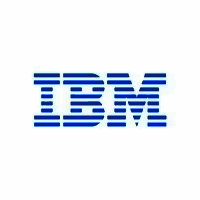Description

IBM Turbonomic

XIA Automation
Comprehensive Overview: IBM Turbonomic vs XIA Automation
IBM Turbonomic
a) Primary Functions and Target Markets
Primary Functions:
- Application Resource Management: IBM Turbonomic provides real-time analytics for application resource management. It automates the resource management process across a wide range of environments, including public cloud, on-premises, and hybrid clouds.
- Performance Assurance: It ensures application performance by continuously adjusting resources like CPU, memory, and storage to meet application demand.
- Cost Optimization: Helps organizations reduce cloud and infrastructure costs by dynamically allocating resources based on demand.
- Compliance and Governance: Offers tools to maintain compliance with industry regulations and governance policies by providing visibility and control over resource usage.
Target Markets:
- Enterprise businesses with complex IT environments.
- Industries that rely heavily on mission-critical applications, such as finance, healthcare, and telecommunications.
- Organizations utilizing cloud, on-prem, and hybrid IT infrastructures looking for cost optimization and performance assurance.
b) Market Share and User Base
IBM Turbonomic is prominent in the application resource management sector, particularly among large enterprises and organizations with complex, hybrid IT environments. However, as of my last update, exact market share figures are not readily available but it is recognized as a strong contender given IBM's established presence in the enterprise software market.
c) Key Differentiating Factors
- Integration with IBM Suite: As part of IBM's broader portfolio, Turbonomic integrates seamlessly with other IBM offerings, providing a comprehensive solution for enterprise IT management.
- AI-Driven Automation: Utilizes AI to automate decision-making processes, which is a core part of its real-time resource management appeal.
- Flexibility: Supports diverse hybrid environments, which is critical for businesses operating across different IT infrastructures.
XIA Automation
a) Primary Functions and Target Markets
Primary Functions:
- IT Process Automation: XIA Automation focuses on automating routine IT processes such as user account provisioning, password resets, and system monitoring.
- Unified IT Management: Centralizes IT administrative tasks to improve efficiency and reduce manual intervention.
- Scalability: Designed to cater to both SMBs and large enterprises by providing scalable automation solutions.
Target Markets:
- Small to mid-sized businesses (SMBs) looking to reduce manual IT overhead.
- Enterprises seeking to streamline operations through automation.
- IT service providers who need robust automation to manage multiple client systems.
b) Market Share and User Base
XIA Automation is specific to IT process automation markets, mainly targeting SMBs and offering considerable value in this niche area. It doesn’t share the enterprise-level dominance that IBM commands but maintains a steady presence within focused niches.
c) Key Differentiating Factors
- Focus on Simplicity: Targets businesses that require straightforward, easy-to-deploy automation solutions without the complexity associated with larger enterprise systems.
- Cost-Effectiveness: Often more affordable for SMBs where large-scale solutions like IBM Turbonomic might represent an overinvestment.
- Niche Specialization: Provides targeted solutions for specific IT process automation needs, contrasting with the broader scope of IBM Turbonomic.
Comparing IBM Turbonomic and XIA Automation
- Scope and Scalability: IBM Turbonomic offers a broader scope with its focus on application resource management and enterprise-scale operations, while XIA Automation focuses on specific IT process automations suitable for smaller businesses.
- Complexity vs. Simplicity: IBM Turbonomic deals with complex infrastructure optimization, which might necessitate a longer implementation phase and advanced IT expertise. XIA Automation is generally easier to deploy and manage.
- Market Focus: IBM Turbonomic aims at large enterprises with complex IT needs, whereas XIA Automation is better suited to SMBs looking to optimize routine IT tasks.
In summary, while IBM Turbonomic is tailored towards enterprise environments requiring sophisticated application and resource management, XIA Automation provides more focused automation solutions that meet the needs of smaller, nimble IT operations.
Contact Info

Year founded :
2010
+1 844-438-8872
Not Available
United States
http://www.linkedin.com/company/turbonomic

Year founded :
Not Available
Not Available
Not Available
Not Available
Not Available
Feature Similarity Breakdown: IBM Turbonomic, XIA Automation
To provide a detailed feature similarity breakdown between IBM Turbonomic and XIA Automation, I'll examine aspects that are typically relevant in software comparison, focusing on their core functionality, user interface, and unique features. Keep in mind actual features might differ based on specific versions or the evolution of the software beyond my last update in October 2023.
a) Core Features in Common
1. Automation and Optimization:
- IBM Turbonomic: Primarily focuses on application resource management through automation to optimize performance and cost-efficiency in IT environments. It uses AI to ensure that applications get the resources they need.
- XIA Automation: Offers automation for IT processes, focusing on streamlining routine administrative tasks and configuration management.
Both solutions provide automation tools that relieve IT teams from manual tasks and aim to improve efficiency.
2. Resource Management:
- Both IBM Turbonomic and XIA Automation have capabilities related to managing resources, albeit at different layers (e.g., applications for Turbonomic and IT infrastructures for XIA Automation).
3. Integration Capabilities:
- Both platforms support various integrations with existing IT environments and tools, although the specifics of these integrations might differ.
b) User Interface Comparison
IBM Turbonomic:
- The interface is designed with a focus on application performance management, presenting data visually with dashboards that emphasize resource use and performance metrics. It includes intuitive navigational elements for monitoring and managing applications across on-premises and cloud environments.
XIA Automation:
- XIA Automation typically features a streamlined interface focused on process automation and administrative task management. The UI is oriented towards configuration management and may include dashboards for tracking task progress and system status.
In terms of UI comparison, IBM Turbonomic's interface is more tailored towards real-time performance insights and resource optimization, while XIA Automation offers a UI geared towards managing automation workflows and tasks.
c) Unique Features
IBM Turbonomic:
- AI-Powered Decisive Actions: Turbonomic stands out with its AI-driven decision-making engine, which recommends and automates actions to assure application performance at the lowest cost.
- Focus on Application Performance: Unlike many automation tools, Turbonomic is more centered on ongoing performance management of applications, making real-time adjustments based on changing demands and conditions.
XIA Automation:
- Configuration Management Emphasis: XIA Automation uniquely offers detailed capabilities for managing IT configurations, documenting systems, and maintaining an audit trail of changes.
- Template and Scripting Support: It provides extensive scripting support and template usage for automating configuration tasks across numerous IT scenarios.
In summary, IBM Turbonomic is particularly distinguished by its application performance management and AI-driven resource optimization, while XIA Automation is unique for its focus on configuration management and process automation within IT infrastructures. The choice between the two would depend greatly on whether an organization is more focused on application performance or IT process and configuration management.
Features

Not Available

Not Available
Best Fit Use Cases: IBM Turbonomic, XIA Automation
IBM Turbonomic
a) For what types of businesses or projects is IBM Turbonomic the best choice?
IBM Turbonomic is well-suited for organizations looking to optimize their hybrid cloud environments or who have complex IT infrastructure that requires effective performance management. It is particularly beneficial for:
-
Large Enterprises: Companies with substantial and diverse infrastructures that span on-premises, private cloud, and public cloud environments can leverage Turbonomic for unified management and optimization.
-
Industries with High IT Demands: Sectors such as finance, healthcare, and retail, which rely heavily on IT for real-time data processing and transaction handling, can benefit significantly from Turbonomic's capabilities.
-
Businesses Focused on Cost Optimization: Companies aiming to reduce cloud and data center costs while ensuring optimal performance will find Turbonomic valuable. Its ability to suggest resource adjustments helps in maintaining efficiency and cutting unnecessary expenditures.
-
Organizations Embracing Digital Transformation: Companies in the midst of digital transformation projects that involve moving workloads to the cloud can use Turbonomic to ensure applications perform efficiently post-migration.
d) How do these products cater to different industry verticals or company sizes?
-
Large Enterprises: IBM Turbonomic caters to large enterprises by providing scalable solutions that can manage large-scale IT environments effectively and ensure that resources are optimally utilized, which is crucial for maintaining operational efficiency.
-
Finance and Healthcare: Given the critical nature of IT in sectors like finance and healthcare, Turbonomic’s focus on maintaining service performance while optimizing costs is particularly valuable.
XIA Automation
b) In what scenarios would XIA Automation be the preferred option?
XIA Automation is an automation platform that is primarily used for streamlining and automating IT administrative tasks. Scenarios where it is the preferred option include:
-
IT Departments with High Administrative Overhead: Organizations seeking to reduce the time and effort spent on repetitive IT administrative tasks like user account management, permissions, and system configuration.
-
Small to Medium-sized Enterprises (SMEs): Companies that may not have large IT teams can leverage XIA Automation to handle routine tasks efficiently, allowing IT staff to focus on more strategic initiatives.
-
Businesses Ensuring Compliance and Standardization: Organizations that need to ensure compliance with industry standards and consistent configuration across systems can benefit from the standardization capabilities provided by XIA Automation.
-
Firms Adopting IT Service Management Frameworks: Companies implementing ITSM practices often use automation to support processes like incident, problem, and change management, making XIA Automation a valuable tool.
d) How do these products cater to different industry verticals or company sizes?
-
SMEs and Business Services: XIA Automation is particularly beneficial for SMEs and companies in business services that need to manage IT environments efficiently without the resources of a large IT department.
-
IT Services and Managed Service Providers: These organizations often require robust automation tools to handle administrative tasks across multiple client environments, and XIA Automation fits well within such a framework.
In summary, IBM Turbonomic is ideal for large, IT-intensive enterprises that need to optimize complex, hybrid infrastructure environments, while XIA Automation is well-suited for smaller businesses or IT departments aiming to automate and streamline routine administrative tasks. These tools cater to different needs and scales, aligning with specific industry requirements and company sizes.
Pricing

Pricing Not Available

Pricing Not Available
Metrics History
Metrics History
Comparing teamSize across companies
Conclusion & Final Verdict: IBM Turbonomic vs XIA Automation
When evaluating IBM Turbonomic and XIA Automation, it's essential to consider several factors, including functionality, ease of use, integration capabilities, scalability, support, and cost. Here's a detailed conclusion and final verdict:
Final Verdict
a) Considering all factors, which product offers the best overall value?
The best overall value depends on the specific needs and priorities of an organization. However, generally speaking, IBM Turbonomic offers a more comprehensive solution for organizations looking to optimize their cloud and virtual environments through real-time performance management and resource allocation. On the other hand, XIA Automation is well-suited for organizations that need efficient IT process automation and Active Directory management. If resource optimization and application performance management are critical, IBM Turbonomic may provide more value. Conversely, for streamlined IT processes, XIA Automation may offer better value.
b) Pros and Cons of Each Product
IBM Turbonomic:
Pros:
- Comprehensive Resource Management: Offers real-time insights into application performance and resource utilization, enabling proactive management.
- Automation Capabilities: Provides automatic resource allocation and workload management to ensure optimal performance.
- Scalability: Designed for scalability, making it suitable for large enterprises with complex IT environments.
- AI-Powered Analysis: Uses AI to provide actionable recommendations, increasing operational efficiency.
Cons:
- Complexity: May have a steep learning curve for smaller teams or organizations with less experience in cloud resource management.
- Cost: Can be expensive, especially for smaller organizations or those with limited budgets.
XIA Automation:
Pros:
- Streamlined IT Processes: Great for automating IT tasks, reducing manual operational workload.
- User-Friendly: Known for its ease of use and straightforward setup, particularly beneficial for small to medium-sized businesses.
- Active Directory Management: Strong capabilities in managing Active Directory, making it useful for IT departments focused on identity and access management.
Cons:
- Limited Scope: Primarily focused on automation, may not offer as comprehensive insights into application performance and resource optimization as IBM Turbonomic.
- Integration: May require additional tools or workarounds for broader integration with diverse IT ecosystems.
c) Recommendations for Users Choosing Between IBM Turbonomic vs XIA Automation
-
Define Your Priorities: If your primary concern is optimizing application performance and cloud resources with predictive insights, IBM Turbonomic is likely the better choice. If you need robust automation for IT processes and Active Directory management, consider XIA Automation.
-
Evaluate Budget Constraints: Consider the cost implications of each solution. IBM Turbonomic might be more expensive but could offer savings through optimized resource usage. XIA Automation is generally more cost-effective.
-
Scale and Complexity: For larger enterprises with complex IT environments, the scalability and comprehensive nature of IBM Turbonomic could be crucial. Smaller organizations with straightforward automation needs might find XIA Automation more accessible and sufficient.
-
Integration Needs: Assess how each product integrates with your existing IT infrastructure. If extensive integration is required, ensure the solution you choose can seamlessly connect with other tools.
-
Trial or Demo: Engage in a trial or seek demos of both products to understand their functionalities and see how they align with your organization's specific needs.
Ultimately, the decision should be guided by your organization's key operational requirements and growth trajectory.
Add to compare
Add similar companies




